Review for Wooden Crosses
When I think of classic World War I films. The original ‘All Quiet on the Western Front’ or ‘Paths of Glory’ spring immediately to mind. Having now seen the stunning, though perhaps less known, ‘Wooden Crosses’ (Les Croix De Bois), it will be this film that will now be uppermost. I’m not often moved to tears by a film but during the last frames of this one I was. Not just for the central character here but for the thousands of lost men he represented. What a bloody waste.
Eureka! Masters of Cinema have done the usual Criterion standard clean up (actually by Pathe in 2014 to mark the 100th year anniversary of the start of the Great War) and extras package here with a DVD / Blu-Ray double-pack of this remarkable film. Directed by Raymond Bernard, also director of the definitive French screen adaptation of Les Misérables, it’s a film that is remarkable as much for its technical brilliance as its emotional power.
The film was widely hailed for its realistic depiction of the horrors of the war at the time of its release in 1932, although it was somewhat subdued and hidden in the run up to WWII due to its relatively sympathetic and humanistic view of both sides of the battle – not great when France was trying to rally up support for its impending battles against the potential invasion by the Nazis.
It was adapted from a novel by Roland Dorgelès (a former corporal of the 39th) who was something of a poet and aesthete prior to the war and who wrote of his experiences virtually every day from the trenches in a series of letters to relatives. He drew upon these descriptors to forge his novel which spent much time describing the horrors of trench warfare, including the blood of battle and the relentless noise of bombs and artillery.
The film opens with a shot of a vast cemetery comprised of what appear to be thousands of wooden crosses. It then cuts to queues of men falling over one another to enlist in the French Army. Among them is an enthusiastic young student, Gilbert Demachy (Pierre Blanchar), who is told to join a unit in the Champagne region. When he arrives he finds a scruffy group of experiences soldiers who welcome him with drink and song whilst gently ribbing his enthusiasm for war. He warms to the group and buys them all a drink before settling snugly into his new digs inside a barn.
The group is (deliberately) diverse, representing all of France. There are cooks, butchers, business men, old and young. It’s probably worth noting that, in common with Italian Neo-realist cinema which came much later, that all the cast were amateurs, deliberately selected because they had all served in the Great War and would be accustomed to the reality of battle, knowing how to accurately throw a grenade for example.
Before long they are called to the front and after endless marching they engage in sporadic battle with small German units who have pushed deeply into French controlled territories.
Eventually, they arrive at ‘the Front’, the Champagne battlefields, and men start falling like flies. Each time they regroup and press on, only to face more bombing and machine gun fire.
On one occasion we see the men in battle-barracks become aware of a digging sound below. They realise that it is the enemy who are attempting to blow them up. When the digging stops they know that the explosives may be planted and we see their anxiety appease as the digging resumes. Eventually they leave the digs to start their shift but minutes later they see the whole building blow up with all those who had made their way in. After a few seconds they turn back to their plodding journey ever close to the ferocity of the front.
The latter third of the film shows the unit right at the front under relentless fire with wounded men left where they lay until nightfall when it’s safer to go to their rescue. All the bonhomie of the unit has disappeared and the film ends (spoiler alert!) with a wounded Gilbert lying in the midst of battle awaiting nightfall, desperately trying to stay awake lest he drift into death. He reprises a song sung earlier in the film in an effort to rally his own spirit, but to no avail. Like thousands of others he too drifts to his death. At that point the film simply ends. No further comment required.
Presented in its original, almost square aspect ratio of 1.19:1, it looks unbelievably good for a film which is now over eighty years old. The French LPCM 2.0 audio track is superb for the vintage too . Not only is dialogue clearer than most films of the age but the explosions and gunfire would be worthy of a contemporary blockbuster.
In common with other Masters of Cinema releases, the disc ships with a bevy of worthwhile extra features.
· The Restoration – this 25 minute documentary is about the recent 4K restoration and reconstruction of the film. Featuring interviews with Davide Pozzi (director of ‘L'immagine Ritrovata’) and visual restoration specialists Ariane Baudat, Celine Stephanie Pozzi, Matteo Rossi, and Giandomenico Zeppa. Also included are interviews with the audio restoration specialist, Gilles Barberis.
· Video interview with film historians Marc Ferro and Laurent Veray – a 30 minute video interview with two French film academics who re-appraise ‘Wooden Crosses’ and argue its case for inclusion in all-time film greats.
• Wooden Crosses: A Sonic Adventure - a 12 minute video interview with Professor of Cinema Studies at University Lumière-Lyon, Martin Barnier who talks about the incredible use of sound in Wooden Crosses as well as the many technical challenges faced in getting the desired results.
• Raymond Bernard Interview - in this 11 minute archival interview (which looks to have been taken from the same session as that included on the Eureka Les Miserable disc) director Raymond Bernard explains how Wooden Crosses came to be made, how he was selected for the job and the challenges he faced during the shooting of the film.
• Roland Dorgeles Interview – a 5 minute interview with writer Roland Dorgelès from Pathe's archives.
• Newsreels – Period newsreels around the production of ‘Wooden Crosses’ from Pathe.
• Adrien Barrere – a 10-minute featurette cartoonist Adrien Barrere who worked up many of the original storyboard sketches for Wooden Crosses.
• The Absent Battle, The Omnipresent War - This 15 minute feaurette looks at Roland Dorgeles’ pictures and writings about his experiences during the war.
• 40-page illustrated booklet: Featuring essays "Les Croix de Bois" by Emmanuel Burdeau; "Echoes of the Past" by Ramond Bernard (extracted from Échos de naguère, Raymond Bernard's autobiography); Interview with Laurent Veray; "Wooden Crosses and its Adaptations"; "Restoring Wooden Crosses"; as well as stills and technical credits.
‘Wooden Crosses’ is one of the best war films this reviewer has ever seen. It’s an incredibly powerful film despite (or maybe because of ) its vintage. Everyone should see it at least once. This fine edition from Eureka, with its incredible restored version of the film and copious extra features, is one to pick up.

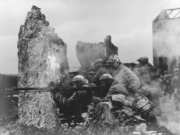
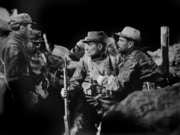
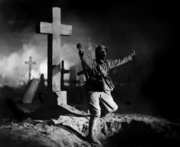

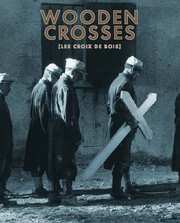
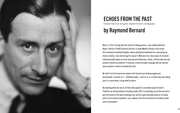


































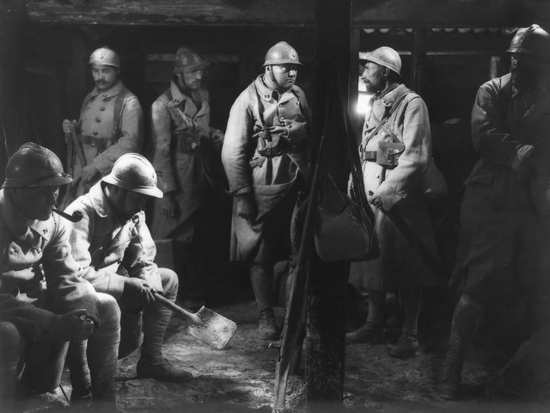


Your Opinions and Comments
Be the first to post a comment!